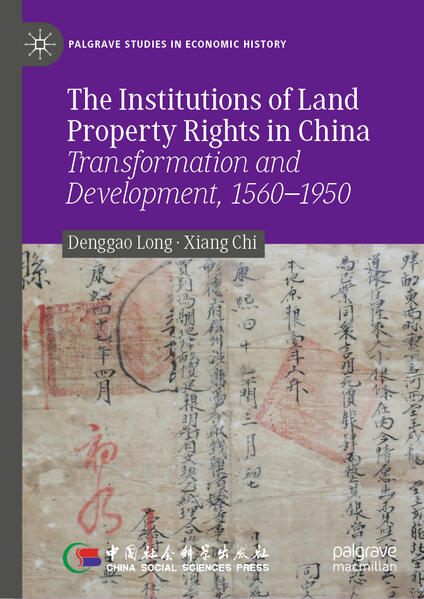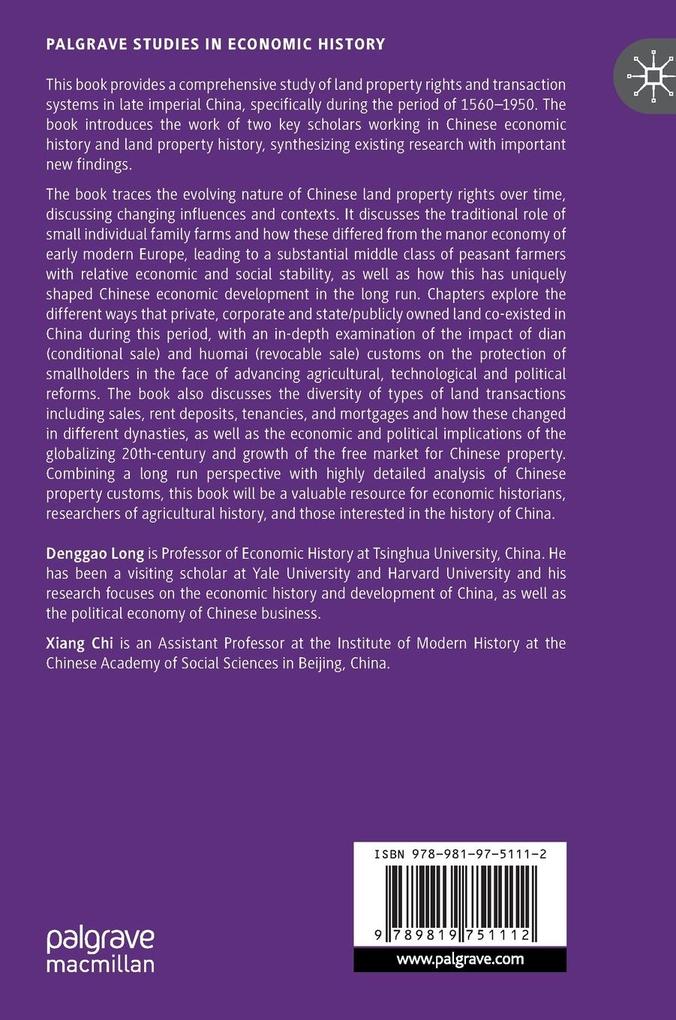
Zustellung: Di, 01.07. - Fr, 04.07.
Versand in 1-2 Wochen
VersandkostenfreiBestellen & in Filiale abholen:
This book provides a comprehensive study of land property rights and transaction systems in late imperial China, specifically during the period of 1560 - 1950. The book introduces the work of two key scholars working in Chinese economic history and land property history, synthesizing existing research with important new findings.
The book traces the evolving nature of Chinese land property rights over time, discussing changing influences and contexts. It discusses the traditional role of small individual family farms and how these differed from the manor economy of early modern Europe, leading to a substantial middle class of peasant farmers with relative economic and social stability, as well as how this has uniquely shaped Chinese economic development in the long run. Chapters explore the different ways that private, corporate and state/publicly owned land co-existed in China during this period, with an in-depth examination of the impact of dian (conditional sale)and huomai (revocable sale) customs on the protection of smallholders in the face of advancing agricultural, technological and political reforms. The book also discusses the diversity of types of land transactions including sales, rent deposits, tenancies, and mortgages and how these changed in different dynasties, as well as the economic and political implications of the globalizing 20th-century and growth of the free market for Chinese property. Combining a long run perspective with highly detailed analysis of Chinese property customs, this book will be a valuable resource for economic historians, researchers of agricultural history, and those interested in the history of China.
Inhaltsverzeichnis
Chapter 1. Outline of the Institutions for Farmland Transactions in Traditional China. - Chapter 2. The Types of Farmland Property Rights. - Chapter 3. The Farmland Property Transaction System: A Study Centering on Dian. - Chapter 4. The Transformation of Farmland Rights Transactions from the Song Dynasty to the Qing Dynasty: A Study Centering on the Nature and Rights of Dian Farmland. - Chapter 5. An Examination and Interpretation of Farmland Rights Distribution. - Chapter 6. Farmland Transaction and Peasant Household Operation. - Chapter 7. The Traditional Presentation of the Essence of Economy and its Modern Disorientation. - Chapter 8. Farmland Rights System and Economic Transformation. - Chapter 9. Conclusion and Interpretation Framework.
Produktdetails
Erscheinungsdatum
30. Oktober 2024
Sprache
englisch
Seitenanzahl
356
Reihe
Palgrave Studies in Economic History
Autor/Autorin
Denggao Long, Xiang Chi
Verlag/Hersteller
Produktart
gebunden
Abbildungen
XVIII, 335 p. 32 illus., 4 illus. in color.
Gewicht
571 g
Größe (L/B/H)
216/153/24 mm
ISBN
9789819751112
Entdecken Sie mehr
Bewertungen
0 Bewertungen
Es wurden noch keine Bewertungen abgegeben. Schreiben Sie die erste Bewertung zu "The Institutions of Land Property Rights in China" und helfen Sie damit anderen bei der Kaufentscheidung.










